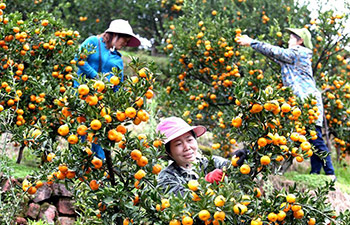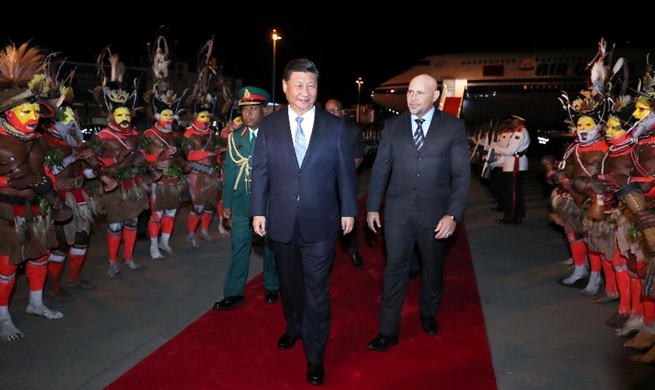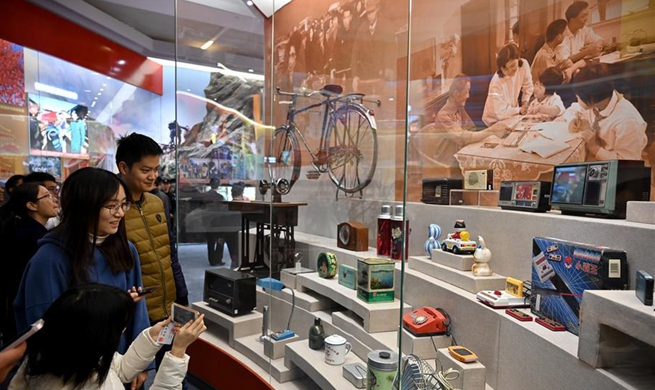CHANGSHA, Nov. 16 (Xinhua) -- Zhang Chunxiu, a woman of ethnic Miao group, never wanted to learn the skill for making traditional kerchiefs unique to her minority nationality when she was young, even though her mother kept nagging her by saying that "no man would marry a girl who couldn't make kerchiefs." She simply did not believe it.
Zhang, now 43, however, has begun to learn the skill from folks of older generations in her village because she now believes that the development of the village depends on the distinctive culture of her ethnicity.
Zhang is the secretary of the Heping Village unit of the Communist Party of China (CPC). Heping Village, administered by the city of Jishou, central China's Hunan Province, is mainly inhabited by ethnic Miao people, whose handcraft is well-known across the country.
The ethnic Miao kerchief has been an iconic handicraft of local women for hundreds of years. The traditional handicraft is also highly useful in their daily lives.
Women use the Miao kerchiefs to wrap their heads to keep warm, or carry their babies on the back using the cloth as a sling, and even tied stones or spears to it to use it as a weapon during combat in the past.
"The making of a kerchief involves weaving and embroidering. Almost every female Miao people was able to craft them years ago," said Wu Yu, a tour guide at a local museum where all kinds of Miao kerchiefs from the past are exhibited.
As more people went to work in cities decades ago, they brought kerchiefs with them to trade. With the increased use of machine weaving and the complex process and low comfortability of making Miao kerchiefs, the Miao kerchiefs at times only appeared as decorations during festive occasions.
Wu said those who still master the skill for making traditional Miao kerchiefs are mostly people over 60 years old.
Fu Yanxiang, 64, has been practicing since she was a little girl pasturing the family cattle. After she got married, she would weave and embroider next to a kerosene lamp after a day's labor.
"There are no particular patterns. We embroider anything that we see and think of," said Fu. For her, a 10-meter-long kerchief usually takes two months.
Zhang was once sent to study in Beijing. Her classmates from other parts of the country were very interested in the mysterious Miao culture. "Many people I met during the trip were also intrigued by my Miao identity."
The study camp gave inspiration to Zhang, who, now as the Party head of her village, regarded the eye-catching Miao kerchief as a beautiful way to lead her fellow villagers out of poverty.
More Miao kerchiefs are now produced and they are worn by both the young and old in town. As the Miao kerchiefs have become popular tourist souvenirs, which means good business, more Miao girls have begun to learn the skill for Miao kerchief making.
"I should take the lead in inheriting the handicraft so many more young people will draw together to strike gold," Zhang said.
















